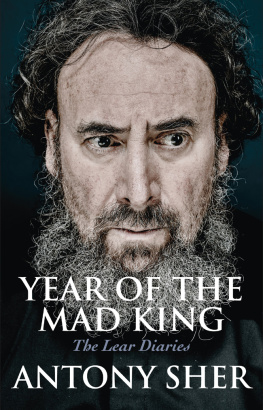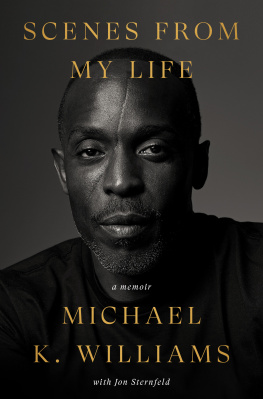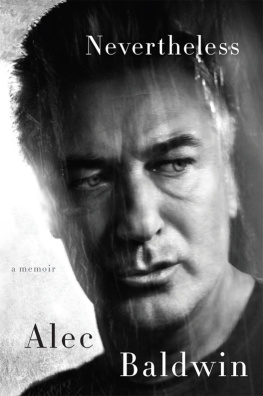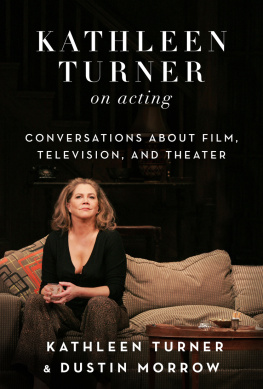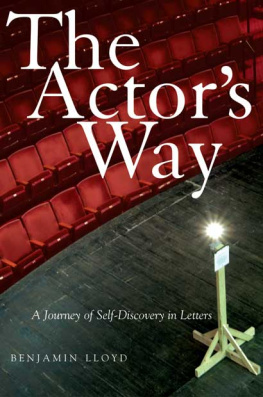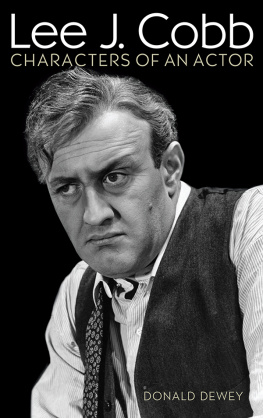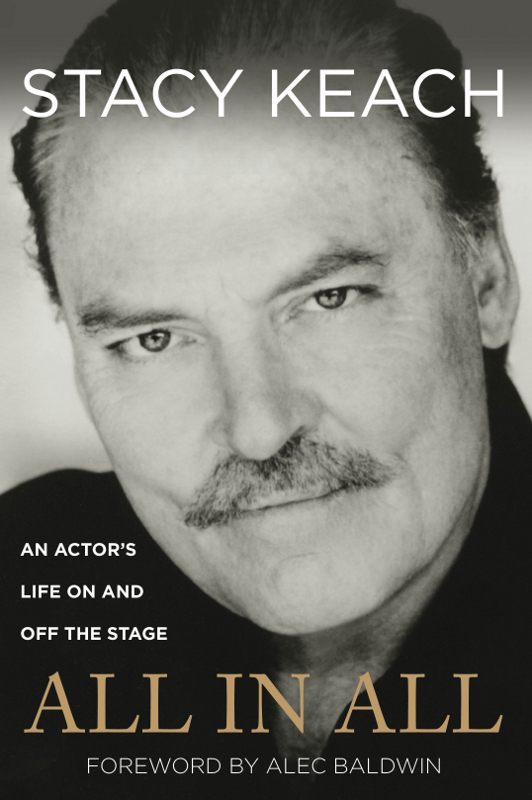
Copyright 2013 by Stacy Keach
ALL RIGHTS RESERVED. No part of this book may be reproduced or transmitted in any form by any means, electronic or mechanical, including photocopying and recording, or by any information storage and retrieval system, except as may be expressly permitted in writing from the publisher. Requests for permission should be addressed to Globe Pequot Press, Attn: Rights and Permissions Department, PO Box 480, Guilford, CT 06437.
Lyons Press is an imprint of Globe Pequot Press.
All photos courtesy of the author unless otherwise indicated.
Project editors: Meredith Dias & Lauren Brancato
Layout artists: Sue Murray & Justin Marciano
Library of Congress Cataloging-in-Publication Data
Keach, Stacy.
All in all : an actors life on and off the stage / Stacy Keach.
pages cm
ISBN 978-1-4930-0116-3 (hardback)
1. Keach, Stacy. 2. ActorsUnited StatesBiography. I. Title.
PN2287.K35A3 2013
791.43028092dc23
[B]
2013016668
FOR MY WIFE, MALGOSIA,
AND MY CHILDREN, SHANNON AND KAROLINA,
FOR THEIR LOVE AND THEIR LAUGHTER
AND FOR ALWAYS NOURISHING THE LIGHT IN MY SOUL
AND TO THE MEMORY OF MY DEAR, DEPARTED PARENTS
by Alec Baldwin
AS A TEENAGE FILM BUFF IN THE EARLY 1970S, I REMEMBER AN ANTICIPATION and excitement when Joseph Wambaughs first police novel was being made into a movie. And with the great George C. Scott, no less. I rushed to see The New Centurions and was immediately struck by the performance of the young actor who played Scotts rookie partner, Stacy Keach.
I didnt know Keach was already a star in the theater world, collecting accolades and awards for shows ranging from MacBird! to Long Days Journey into Night. Just weeks before I saw him for the first time critics had called him the finest American Hamlet since John Barrymore. I only knew then that Keach was intense, even riveting, and more than capable of holding his own onscreen opposite Scott, both as an actor and a film star.
Now, four decades on, I have a deeper, more nuanced appreciation for what Stacy Keach brings to this art. Yet in many ways my reaction remains as elemental as it was back in 1972he is both a presence and an actor. I am often loath to make comparisons and contrasts, but Stacy is a miraculous hybrid of the hyper-masculinity of a Brando or Robert Mitchum and the classical training of Richard Burton or Kevin Kline.
The blend of a tough, two-fisted persona with a well-honed Shakespearean technique made Stacy a god in the theater, even if it probably didnt do him any favors in Hollywood, where they often require someone more monochromatic. (Ill leave it to Stacy to detail his endless struggle in Hollywood, with hairpieces among other things.) Many actors glide confidently through their early years only to realize, in middle age, how difficult it is to learn to act in the spotlight. Stacy might have backed off of his technique and left the heavy acting to others in order to position himself for a more lucrative movie career, but for great artists like Stacy such compromises are simply not an option. I think we should all be grateful that he didnt jettison both his commitment and the complexity of his performances.
He was on the threshold of becoming a great movie tough guy, in the manner of John Garfield or William Holden, although those names point up the notion that Stacy may have been born in the wrong decade, coming of age when leading men were often either feminized or damaged goods. But Stacy is best known to the masses as Mike Hammer, also a romantic tough guy in the wrong era, roaming the streets of 1980s New York wearing a fedora and trench coat. He played Mike Hammer with a lighter touch than the icon of Spillanes novels and, although it was not as layered a role as the ones he had in movies like Fat City or End of the Road, he brought to it his ineffable qualitythe very same stuff his Hamlet was made of. His inner strengths come through regardless of the venue, and that made Mike Hammer, a show that otherwise might have been instantly forgettable, the rebirth of an iconic character. Stacy is a working actor, meaning that when he takes a job, hell pour everything hes got into it.
Im telling you all this because Stacy wont. Over the course of hundreds of pages, this book contains Stacys essence, from Hamlet to Hammer, from Richard III to Sergeant Stedenko, from King Lear to Papa Ken Titus. He is a great raconteur. Youll delight in his tales of meeting Burton (though Liz Taylor made the greater impression) and working with Mitchum, of singing with Judy Collins and gambling with John Huston, of false mustaches and near deadly stunts. But Stacy is not a self-seeking man. That guy would have made a different set of choices.
Over the past fifty years, Stacys passion and persistence have combined with his powerful gifts and technique to make him one of the true wild mustangs of theater history. He is a natural performer who walks out on the stage and is completely in the moment. Immersed in his character, he is nonetheless able to telepathically convey to the audience, Theres no place else Id rather be than here with you. Through his work, Keach inspires, teaches, and welcomes all at once. How rare!
When I saw Stacy in Other Desert Cities on Broadway in 2012, he was not the shows star, yet he was very much the leading man, the sun around which everyone revolved. Its why I look forward to seeing him as Falstaff in Henry IV in 2014. Watching him onstage, I said to myself, Thats what I hope Im still able to do when Im in my seventies. Stacy Keach remains a role model for me even now. I wonder if he realizes his effect on other actors.
Masculine and sensitive, intelligent and leonine, he is a force. To quote Edward Bulwer-Lytton, Talent does what it can; genius does what it must.
I GLARED AT THE CAMERA AND SPIT, UNLEASHING A MOUTHFUL WITH AS much force and rage as I could muster.
It was cathartic, kind of like I was getting even with the gods. Yet I felt no real anger. This moment was played strictly for laughs, the ultimate spit take. It was the winter of 2012 and I was out in Queens, filming a scene for 30 Rock. It was a cameo but one I reveled inafter a half-century of acting, of playing everyone from Hamlet to Hemingway, this was the first time Id ever been asked to play a character named Stacy Keach.
The script was a parody of Clint Eastwoods classic Super Bowl commercial Halftime in America. My role was not to rally the nations spirit; Stacy Keachs call to action was to help Jack Donaghy, the ruthless executive played by Alec Baldwin, unload the worlds worst couches. My technique was to bully American viewers into feeling wimpy if they couldnt handle tough times and uncomfortable seating.
When we get hit and are down we dont stay down, we get up and we hit back with our fists or our nunchucks, I growled, before acknowledging that nunchucking can wear a guy out, and then its time to sit on a couch, an American couch, a Kouchtown couch.
This wasnt just satirizing the Chrysler commercial; it was also poking fun at me, my tough guy, go-it-alone persona, developed over many roles but etched in peoples minds by my years playing Mike Hammer. It turns out thatfor better and for worsetheres a certain amount of truth in that image, something I realized about myself in the 1980s after I was arrested for cocaine possession and landed in Englands Reading Jail.
I was already plenty busy performing



